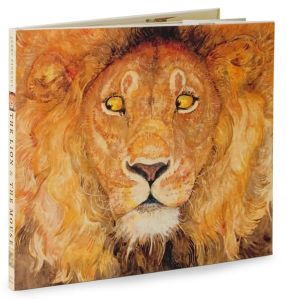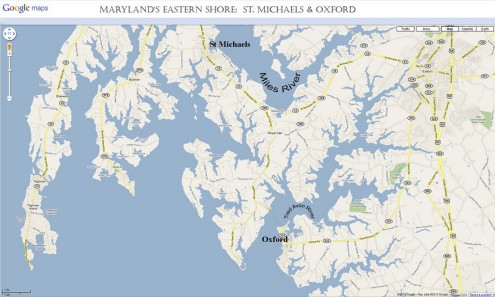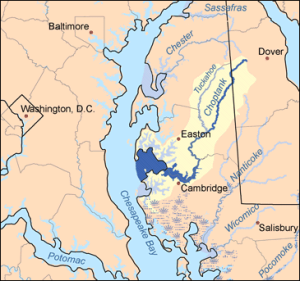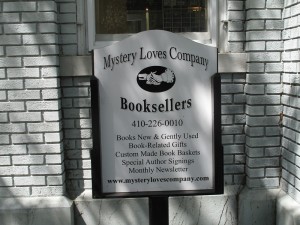A tale of two bookstores, with a digression concerning Maryland’s Eastern Shore
Recently I went to a Big Box bookstore, looking for two easy picture books. One was The Lion & the Mouse, Jerry Pinkney’s gorgeous Caldecott winner; the other was Yoko’s Paper Cranes by Rosemary Wells. I had seen them both at the library and simply had to have them for the forthcoming grandchild (Oh…Haven’t I mentioned…? She’s due in early October. There will be plenty of time then for kvelling – don’t think there’s a word for this in English – so for now, on with our story…)
Here are the books in question:
Admittedly, I have spent very little time in the area of this store devoted to children’s literature. Even so, I found it a confusing place. A surprisingly small space was allotted to what we in the library trade call easy picture books. They were primarily shelved spine out. Keep in mind, these books are very thin. I had trouble making out the names of the authors and illustrators. And while there was a bay labeled “Newbery Award Winners,” there was no analogous location for winners of the immensely prestigious Caldecott Medal – or none that I could see, at any rate.
I looked around for a staff person and saw none. I then went to the customer service desk – no one there. I roamed freely, looking for anything resembling a sales associate, and still came up empty handed. I had a paperback and a couple of magazines, so I decided to check out at that point. There was a line, this being Memorial Day and the store being fairly crowded. My turn finally came. Often when you check out at one of these stores, the sales clerk asks if you found everything you were looking for. This time, the clerk did not ask me that question.
He should have. I had my answer ready!
I returned home and ordered the books from Amazon. They’re on their way to me, even as I write this.
Meanwhile, two weeks ago, in the matter of bookstores, it was a different story entirely.
Mystery Loves Company is located in the exquisite small town of Oxford, on Maryland’s Eastern Shore.
A word – actually several words – of explanation first. The region known as the Eastern Shore is the part of Maryland that is East of the Chesapeake Bay. To get there, you cross the majestic William Preston Lane Jr. Memorial Bridge, more commonly known in these parts as the Bay Bridge (US 50/301).
When Ron and I go to the Eastern Shore, we stay at a lovely establishment in St. Michaels called The Inn at Perry Cabin. It is right on the water – the Miles River, to be exact, although strictly speaking the Miles is not a river but an inlet of the Bay. From this pleasant staging post, it is an easy task to reach Oxford. You drive to tiny Bellevue and hop on board the Oxford-Bellevue Ferry. Established in 1683, it is believed to be America’s oldest privately owned and operated ferry service.
As ferry boats go, it is a small vessel, able to accommodate up to nine vehicles.
We went as walk-ons. The three-quarters-of-a-mile distance is covered in about seven minutes. I dearly wished it were longer. It feels so wonderful to be out on the water.  That particular water, by the way, is the Tred Avon River, the name of which, Wikipedia informs us, is a corruption of “Third Haven.” The Tred Avon is a tributary of the Choptank, which is in turn a tributary of the Chesapeake Bay.
That particular water, by the way, is the Tred Avon River, the name of which, Wikipedia informs us, is a corruption of “Third Haven.” The Tred Avon is a tributary of the Choptank, which is in turn a tributary of the Chesapeake Bay.
(I had never heard of the Choptank until I read – with astonished wonder! – John Barth‘s magnum opus: 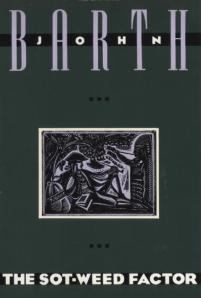 .)
.)
Ferries have such a long reach back in human history, both real and mythic, all the way back to Charon, who, the ancients claimed, brought the dead from the land of the living across the water to the underworld. This thought put me in mind of The Isle of the Dead, the title of both Arnold Bocklin’s painting and the tone poem by Rachmaninoff. The two are brought together in this video clip:
Happily, our little ferry trip took us to a beautiful land of the living. Officially founded in 1683, Oxford is a jewel of a town. As we walked along North Morris Street, we passed several beautifully tended homes and gardens. Several, though private residences,are designated historical landmarks.
In short order we attained Mystery Loves Company Booksellers.
Within its modest premises – it occupies a former bank building – can be found a veritable treasure trove of crime fiction titles and back issues of such magazines as Mystery Scene, Crime Spree, and the late lamented Mystery News. Was I in hog heaven? You betcha! 
While I was blissfully browsing, another customer came in. He and the proprietor/owner, Kathy Harig, got into a lively discussion of the novels of Icelandic author Arnaldur Indridason. I read Silence of the Grave, I put in, but was not crazy about it – too much angst involving the detective’s personal life. Now Karin Fossum – she is truly superb!
We mystery mavens live for spontaneous discussion outbursts like this one. And are we possessed of definite opinions? Speaking only for myself -indeed so! And yet – we are always hungry for recommendations from other mavens.
I was especially pleased to see that Kathy stocked a goodly number of titles from Felony & Mayhem. Here’s what I bought:
 Because I’ve long been curious about this Golden Age classic;
Because I’ve long been curious about this Golden Age classic;
 Same with this title, and I loved The Moving Toyshop;
Same with this title, and I loved The Moving Toyshop;
 Because I really liked The Accomplice;
Because I really liked The Accomplice;
 Because I thought Thunder Bay was outstanding, and because Marge gave a particularly compelling book talk on this title at a recent meeting of the Usual Suspects.
Because I thought Thunder Bay was outstanding, and because Marge gave a particularly compelling book talk on this title at a recent meeting of the Usual Suspects.
So: in the space of two weeks: a bookstore virtually devoid of staff (on a major holiday!), the staff that was actually present being bored, oblivious, and treating books like any other commodity; and a tiny little shop in a tiny little town on the water, filled with volumes known and loved by customers and owner alike.
Draw your own conclusions about what we are currently lumbered with, and the precious commodity that we’re in danger of losing.
It was the best of times, it was the worst of times…
“‘Plato said all science begins with astonishment.'” – The Evolution of Calpurnia Tate, by Jacqueline Kelly
 Among the few gifts inherent in the recent back-to-back blizzards was the chance to get lots of reading done. One of the books I finished during the inundation was The Evolution of Calpurnia Tate. This action of this young adult title, a 2010 Newbery Honor Book, takes place in Texas in 1899, and it features as its protagonist one Calpurnia Virginia Tate. The eleven-year-old Calpurnia, sometimes called Callie Vee, has her hands full learning to hold her own as the sole daughter in a family of seven siblings. But she has a powerful ally and mentor in her grandfather. This elderly gentleman, a Civil War veteran, has a passionate interest in the natural world. Living as they do in the country, the Tates have abundant opportunities to observe that world. In the course of the novel,the grandfather’s passion passes directly to the granddaughter.
Among the few gifts inherent in the recent back-to-back blizzards was the chance to get lots of reading done. One of the books I finished during the inundation was The Evolution of Calpurnia Tate. This action of this young adult title, a 2010 Newbery Honor Book, takes place in Texas in 1899, and it features as its protagonist one Calpurnia Virginia Tate. The eleven-year-old Calpurnia, sometimes called Callie Vee, has her hands full learning to hold her own as the sole daughter in a family of seven siblings. But she has a powerful ally and mentor in her grandfather. This elderly gentleman, a Civil War veteran, has a passionate interest in the natural world. Living as they do in the country, the Tates have abundant opportunities to observe that world. In the course of the novel,the grandfather’s passion passes directly to the granddaughter.
Callie’s ardor for science is, alas, not allowed free reign. Her mother, a sweet but conventional woman, is determined to teach her the housewifely arts of sewing, mending, and cooking. Callie has no interest in these pursuits, but her mother insists that she achieve at least a minimum competency That this cramps the style of the budding scientist is putting it mildly!
In fact, Callie is not even sure that a woman can aspire to that lofty profession. But her grandfather soon sets her straight on that score as he rattles off names like Marie Curie, Martha Maxwell, Mary Anning, Isabella Bird, and Sophia Kovalevsky. (Of Maxwell and Anning I knew nothing. I was vaguely familiar with Isabella Bird. And I just had to smile at that last one. I had never heard of Sophia Kovalevsky before reading the title story in Alice Munro’s story collection, Too Much Happiness. Now I have encountered her in two different works of fiction in less than three months.)
Calpurnia Tate is by no means all work and no play. There are plenty of diversions, even a small Texas town at the turn of the century. In fact, there were perhaps a few too many – at least, for this reader. Like Heart of a Shepherd, which I wrote about recently, this novel is constructed as an episodic rather than a linear narrative. While this method of storytelling can be very effective in creating a world, it can also interfere with a crucial aspect of the plot; namely, pacing. I have, in the course of my reading life, occasionally enjoyed fiction whose plot did not follow a strictly linear path. One example would be Shadow the Wind by Carlos Ruiz Zafon. Another would be The Professor’s House by Willa Cather. Shadow moves back and forth in time with great fluidity, while Professor contains a lengthy digression that almost constitutes a novella-within-the-novel itself. And there’s Anita Brookner, whose novels are like still bodies of water with great depths to be plumbed.
On the whole, I prefer a tale with a trajectory straight as an arrow. I figure if it was good enough for Jane Austen, Charles Dickens, et al., it is certainly good enough for me. This is probably the main reason that I love crime fiction (and true crime stories, too). The element of suspense in a novel – well, I find it indispensable. Now suspense is not necessarily a function of the plot. In Brookner’s 1984 tour de force Hotel Du Lac, it comes entirely through the main character, Edith Hope. There’s an electrifying, decisive moment in that novel that I shall never forget; it’s made all the more powerful by the outward calm that precedes it.
And oh my, what was I saying about digressions? As you have probably gathered, I did think that there was an intermittent problem with pacing in The Evolution of Calpurnia Tate. The book is 338 pages long, and there were times when I became impatient with it. I very much liked having a front row seat at the drama of Calpurnia’s transformation, but the story kept going off on tangents of one sort or another, and not all were equally absorbing – at least, for me they weren’t.
First time novelist Jacqueline Kelly writes extremely well, especially when she’s describing natural phenomena and Callie’s response to them:
‘Then a hummingbird careened around a corner of the house and plunged into the trumpet of the nearest lily drooping in the heat. Not finding it to his liking, he abruptly backed out and explored the next one. I sat a few feet away, entranced, close enough to hear the angry low-pitched buzzing of his wings, so at odds with his jewel-like appearance and jaunty attitude. The bird paused at the lip of a flower and then turned and caught sight of me. I froze. The bird stopped four inches shy of my face and hung there, I swear. I felt the tiny rush of wind from his wings against my forehead and reflexively, my eyes squeezed shut of their own accord. How I wish I’d been able to keep them open, but it was a natural reaction and I couldn’t stop myself. The second I opened them, the bird flew off. He was the size of a winged pecan. Fueled by rage or curiosity–who could tell–he cared not at all that I could have crushed him with the lightest swat.
Kelly can also be very funny, especially when Calpurnia ruefully describes her forays into the housewifely arts: ‘Stitches dropped themselves and later reappeared at random so that the long striped scarf I was knitting bulged in the middle like a python after dining on a rabbit.’
A foray into children’s literature: Heart of a Shepherd, by Rosanne Parry
Every once in a while, I feel the need to catch up with what’s happening with children’s and young adult literature. This is definitely not my area of expertise, but luckily, I know just the person to guide me: Barb Langridge of A Book and a Hug. Into this great site Barb pours her love and knowledge of books for young people. If you click on Books Alive, you’ll see Barb’s interviews with authors. This show can also be seen locally on Verizon Channel 42 and Comcast Channel 95. Barb also recommends children’s books from time to time on WBAL TV Channel 11.
See for yourself how infectious Barb’s enthusiasm can be!
More segments can be found on the station’s website.
**************************************
I asked Barb what she’d read lately and really liked. I had but one stipulation: the writing has got to be good. Here are her recommendations:
 Heart of a Shepherd is the story of Brother, who lives on a ranch in Oregon. Brother’s real name is Ignatius, but he’d rather it were not; hence, the name he goes by instead. He does in fact have brothers, older than himself, who happily follow careers in the military or in ranching that are the twin lodestars of this family. Also living at the ranch are Brother’s Dad and his grandparents. (His mother is in Rome, on some ill-defined long term artistic mission. She seems to be missing in action, in more ways than one. Family members use remarkable restraint when speaking of her.)
Heart of a Shepherd is the story of Brother, who lives on a ranch in Oregon. Brother’s real name is Ignatius, but he’d rather it were not; hence, the name he goes by instead. He does in fact have brothers, older than himself, who happily follow careers in the military or in ranching that are the twin lodestars of this family. Also living at the ranch are Brother’s Dad and his grandparents. (His mother is in Rome, on some ill-defined long term artistic mission. She seems to be missing in action, in more ways than one. Family members use remarkable restraint when speaking of her.)
As the novel opens, Brothers father, a member of the Army Reserves, is about to be shipped out to Irag. His sons naturally feel bereft at this news, Brother feels it especially keenly. Keeping the ranch going is a full time job for everyone. How will they manage with one less hand on deck?
Heart of a Shepherd has much to recommend it. First time novelist Rosanne Parry has a lively accessible style. She renders vividly the beauty of Oregon. Her characters spring to life naturally; this effect is enhanced by the authors’ easy way with dialog. Brother in particular has a winning way about him. He’s struggling with some major issues; the reader cannot help but empathize. And besides, look at that young fellow on the cover! I just wanted to enfold him in my arms, to comfort and encourage him.
Yet that is not necessarily what he would want. Brother is a loving member of his family, but like most young boys, he is eager to become a man, to assume adult responsibilities as well as to reap the concomitant rewards. He’ll have ample opportunity to do both in the course of this narrative.
There’s some lovely writing in Heart of a Shepherd, and I appreciated Parry’s gentle sense of humor. There were elements in the novel that surprised me; one of them was the strong presence of religion. Brother and his family are Catholic, with the exception of his grandfather, who is Quaker. Mass is said at a nearby church by a sort of circuit-riding priest. Each person’s faith is heartfelt and sincere. It is when the family are assembling for Mass that there occurs between the grandparents a scene I shall always cherish:
‘Grandma and Grandpa finish their tidying up and meet each other by the church door, just like they have forever. They hold hands and bow their heads until their foreheads touch. They only pray for a few seconds, and then Grandpa kisses Grandma, and she strokes the side of his face. He zips up his coat and goes outside, and she takes up her usual pew.
*******************************
Now this brings me to a question I have about contemporary literature for children and young adults. Let me frame my query in terms of the book I’ve just discussed. Heart of a Shepherd is sweet, unpretentious, with appealing characters and setting. Its strengths lie in those areas, not in its narrative drive. The fact is, what plot there is tends to meander, somewhat. like a stream. (There are, though, some highly dramatic set pieces, like the rattlesnake incident – but I’ll say no more about that at present!)
Here’s my question: are books like this actually written for today’s child? Or are they written for parents and librarians? As I’ve already said, this is not by any means my area of expertise, but if you spend any time on the information desk at the library these, days, kids seem to want action-oriented novels, fantasies, or books with vampires in them. I believe that Heart of a Shepherd would be classified as realistic fiction. This is a genre that I personally enjoy. But do the kids of today feel the same?
(Barb, feel free to weigh in here, and anyone else for that matter.)
How about historical fiction? I absolutely love it, but I have a feeling that children and teenagers read it only when they have to, for a school assignment. One of Barb’s other suggested reads, The Evolution of Calpurnia Tate, belongs in this genre. I’m about half way through this novel and will have more to say about it in a later post. But I can’t resist saying this right now: I’m loving it!
Here are some works of historical fiction that I’ve retained a fondness for over the years:

A vivid depiction of Civil War era Washington DC, by this supreme writer of American historical fiction

An immensely sad and moving story of World War Two - also a superb recorded book, read by Allan Corduner

One boy's experience of the tragedy of the Armenians in Turkey in 1915 - a tremendously moving narrative
 This is one of my favorite novels in any genre or category. Juan de Pareja (1610-1670), the son of a female slave, was a member of the household and workshop of the great Spanish painter Diego Velasquez. Elizabeth Borton de Trevino brings to vivid life this noble individual and the turbulent times in which he lived.
This is one of my favorite novels in any genre or category. Juan de Pareja (1610-1670), the son of a female slave, was a member of the household and workshop of the great Spanish painter Diego Velasquez. Elizabeth Borton de Trevino brings to vivid life this noble individual and the turbulent times in which he lived.
Here is Velasquez’s famous painting of Juan de Pareja:
****************************
Upon finishing The Evolution of Calpurnia Tate, I’ll move on to The Graveyard Book. Any other suggestions will be gratefully received! (Lots of reading is getting done here in the mid-Atlantic, where we are hunkered down and awaiting the next snowstorm…)

